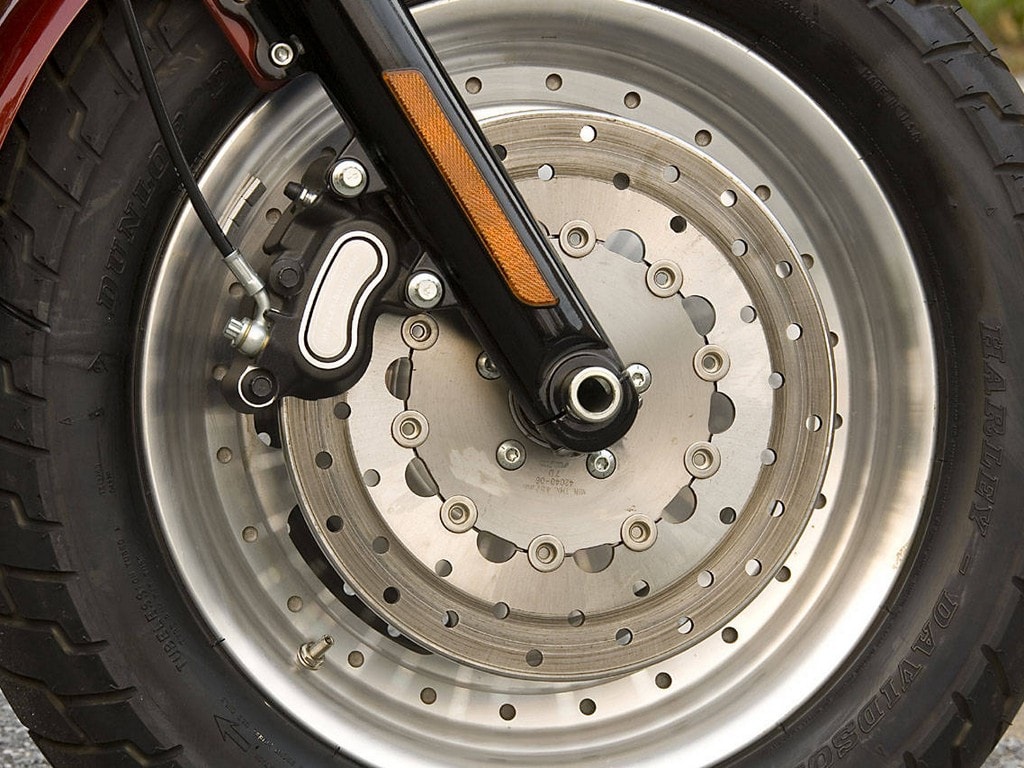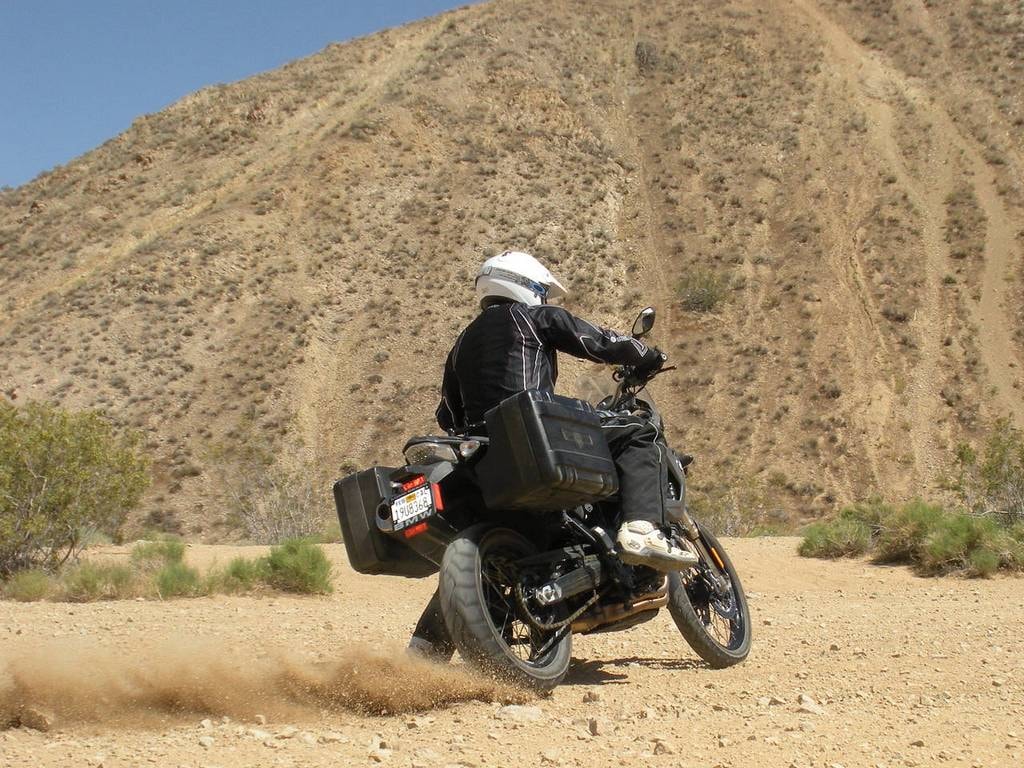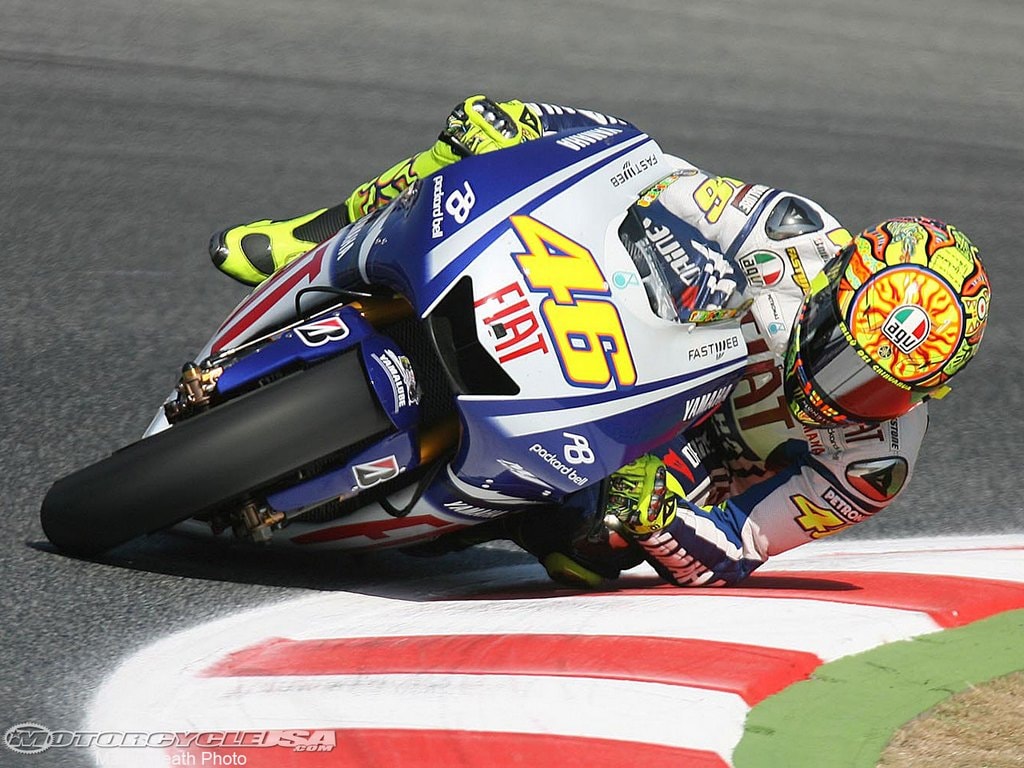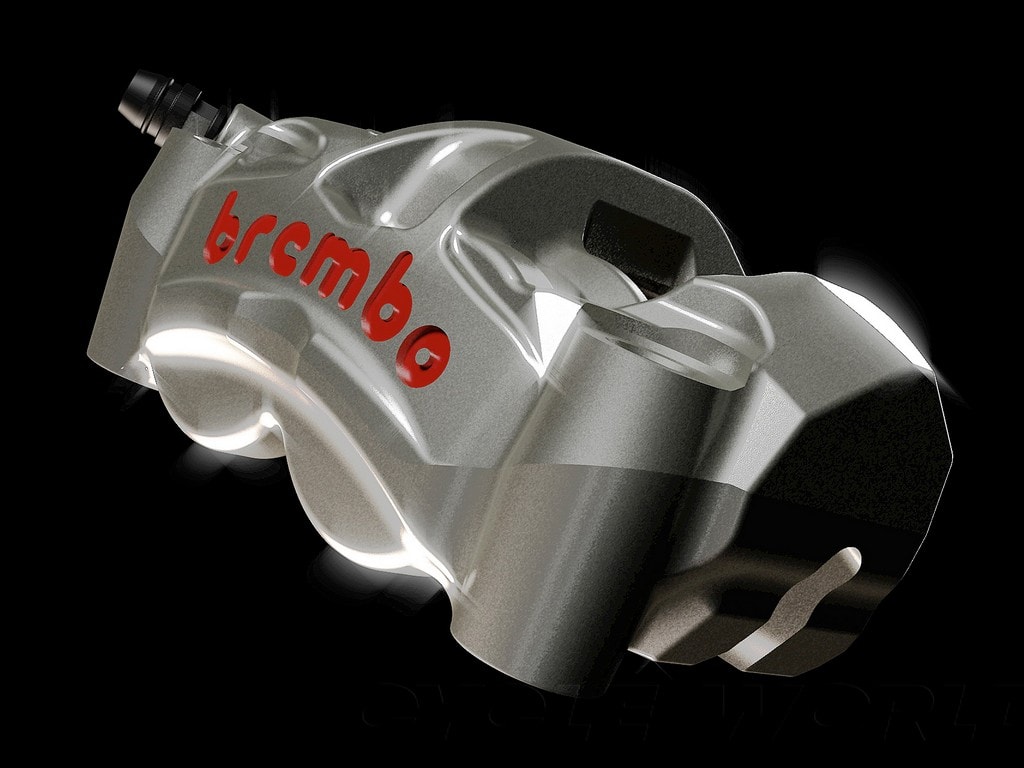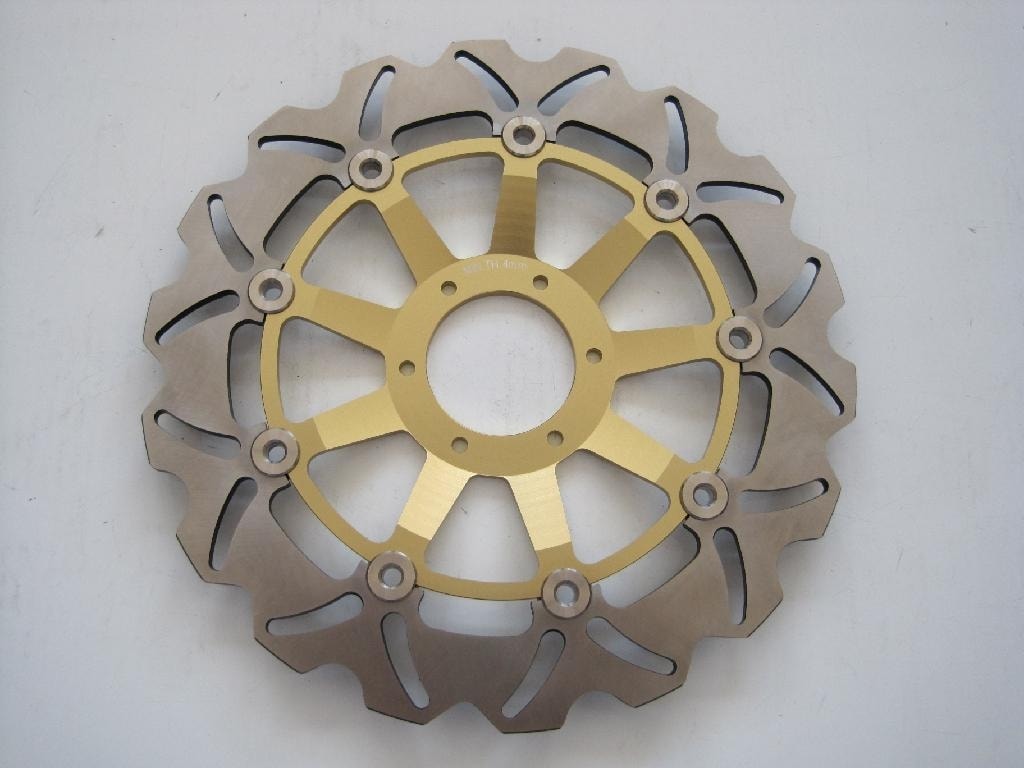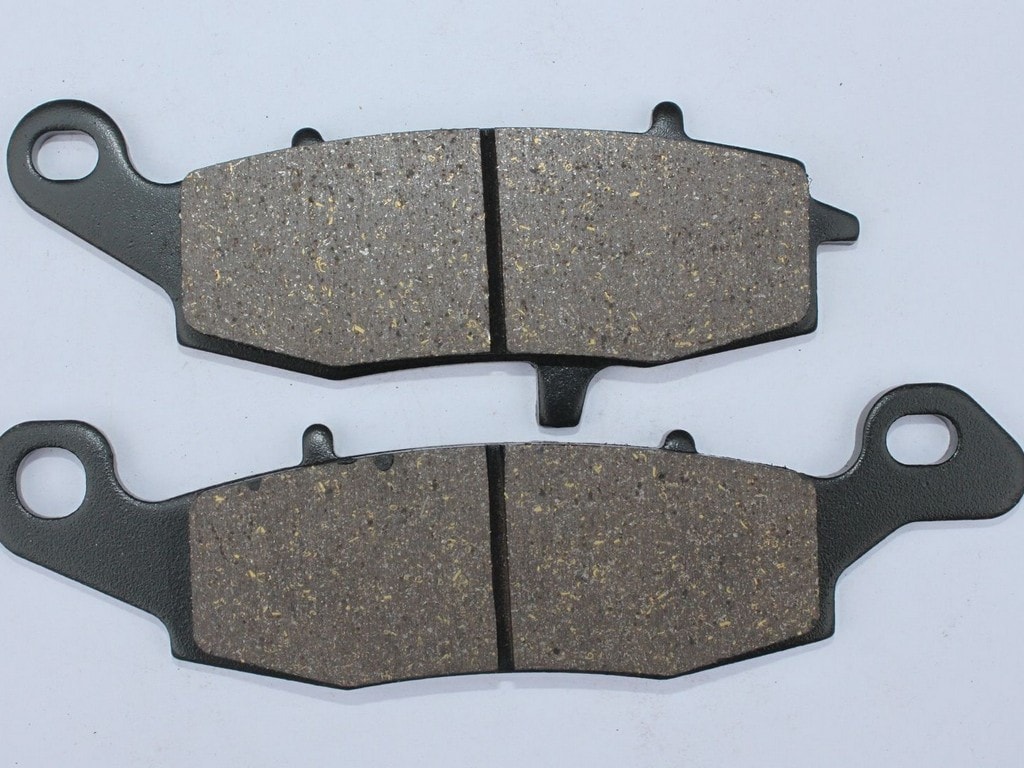Here we go with the second episode of the "How to brake" guide, adding further details to what riding a motorcycle is really about and hopefully helping young and inexperienced bike enthusiasts ride better and in safety.
The first part of this "How to brake" guide treated the somewhat generic topic of grip and has shed some light upon the intricate dynamics of a moving motorcycle. We'll continue the dynamics part with more useful details regarding suspension and tips for braking efficiently.
Different types of bikes react differently to braking so that’s why it's really important to get to know the one you're on or planning to drive. The way a motorcycle “feels” is derived from its very architecture and setup, and failing to adapt your riding style to the way a specific bike requires can result in poor handling or even accidents.
Springs and shock absorbers are a key element when it comes to maintaining contact between tires and the road and having them improperly set up or in bad condition/ damaged poses a major threat to the safety of the bike and the rider.
Bikes designed to be used on surfaces other than track or asphalt come with slightly softer springs; due to the very nature of the terrain, the fork needs a lot of travel in order to maintain the rest of the bike level and in contact with the ground. In case a larger obstacle is being confronted, the more “permissive” springs will allow the wheel to easily climb the rock or mound by retreating the tubes into the fork. Should the same scenario be repeated with stronger springs, the entire bike is most likely to jump over the obstacle with a more brutal movement that can damage the frame, forks, or even worse, cause the driver to lose control and crash.
Sport bikes come with stronger, more rigid suspension, minimizing the dive effect when braking and thus maintaining better contact between both wheels and road. While stronger suspension favors braking and a more balanced feel of the bike even during powerful braking, it can become really dangerous when passing over uneven portions because it can cause stamping.
Stamping refers to the small “jumps” of a wheel caused by passing over small obstacles such as pebbles, level differences between concrete slabs or rippled asphalt. Losing contact between the tires and the road during braking can lead to serious trouble, especially when adding in the panic factor and point fixation. Choosing to ride a specific bike on the surface its designers intended not only maximizes the fun, but it only grants a safer ride.
When brand new, the surface of a motorcycle tire is covered with a special agent that helps preserve the rubber. Even worse, you'll find other chemical residues left on the surface of the tire after the molding process. These release agents and surface conditioners (which help the tire look almost waxy when new) are your worst enemies after installing new rubbers on your bike.
The first 70 miles or more (100 km) are to be driven very carefully, until the surface of the tires reaches the optimal shape and the agents/ residue is scrubbed off. Extra care is not only mandatory when turning – a lot of guys crashed after their rear wheels slid out and caused them to lose control in a straight line and at low speed.
Even worse, as the surface of the tire is scuffed differently on various portions, you might find yourselves in a nastier scenario in which the wheel spins off for a split second and then regains traction, bucking you into a highside with the most unpleasant resolve. Riding with brand new tires in the rain is somewhat like really asking for it!
The coating of new tires is easily removed in several ways. You can either ride carefully for the first 100 miles (160 km), avoiding aggressive driving and progressively increasing both speed and leaning angles or finding a free parking lot and doing a lot of figure-eights at low speed. As the rubber is being freed from the coating, you can do your turns faster and tilt your bike more.
If you're looking for a fast way to “scrub off” your new tires, you can do this in the very place you've had them installed. Place the wheel on a balancer or have your bike on the center stand (in case you have one) and give it a thorough spin. Then use the old tire to “lathe” a bit the surface of the new one until it's matte and you feel the porous rubber with your fingers. Always remember the safety precautions and use gloves and eye protection while attempting this operation.
You'll notice that a scuffed tire not only boasts increased traction, but it will also help you brake better and in shorter distances. The discussion whether the manufacturers should have the tires already scuffed (and thus more “road-ready” and with the best handling available for that type) is still open.
Any wheeled vehicle behaves almost the same when its wheels lock due to excessive braking: it begins to slide out of control. Leaving aside the sport drifting, having your vehicle moving by its own is an almost sure way to end the day in the ER, and that's why excessive braking is to be dearly avoided.
Modern bikes come with ABS brakes that help the rider avoid locking the wheels and decrease the stopping distance or skidding. While the presence of the ABS increases the safety, this doesn't mean that those bikes are completely safe, though.
While emergency braking requires a firm lever action, the hand must be gentle enough so that the wheel slows down as much as possible without locking and without losing a firm contact with the road. Most bikes manufactured in the last 20 years or so come with very powerful front brakes, especially those with two front discs; a skilled rider could easily “stand a bike on its nose”. Mastering the power of the brakes is a skill constantly being exercised each time you get on a motorbike and the more you practice, the better the results.
Most experienced riders agree that one can still refine his or her braking skills even after many years spent in a motorcycle seat. The road and traffic can come up with an infinity of particular situations that demand different approaches and one could (or maybe should) never even dream he or she has finished learning how to brake in every situation imaginable.
It's wise to practice braking close to the boundaries of the bike you're riding as it helps you find out the point where your wheels start to lose grip and give in to breaking contact with the road. The closer to this point you can brake, the shorter the distance until you reach a full stop safely.
Practicing braking on roads with preferably no traffic at all or parking lot is a most welcome habit of every rider, especially the inexperienced ones. It helps them better know their bikes and renders them able to ride closer to their true potential.
Catch us with the next episode as we'll detail more things about hard braking, emergency braking and more.
Different types of bikes react differently to braking so that’s why it's really important to get to know the one you're on or planning to drive. The way a motorcycle “feels” is derived from its very architecture and setup, and failing to adapt your riding style to the way a specific bike requires can result in poor handling or even accidents.
Rubber Side Down
When braking, being in contact with the road is essential, as there is no part of a bike being able to grip the riding surface better than rubber does. Keeping the bike with the “rubber side downwards” will help you brake efficiently when needed and make it safely at home. Of course, if we're thinking about offroad riding or driving over other kinds of unstable surfaces means something completely different, but we'll see about this later on.Springs and shock absorbers are a key element when it comes to maintaining contact between tires and the road and having them improperly set up or in bad condition/ damaged poses a major threat to the safety of the bike and the rider.
Bikes designed to be used on surfaces other than track or asphalt come with slightly softer springs; due to the very nature of the terrain, the fork needs a lot of travel in order to maintain the rest of the bike level and in contact with the ground. In case a larger obstacle is being confronted, the more “permissive” springs will allow the wheel to easily climb the rock or mound by retreating the tubes into the fork. Should the same scenario be repeated with stronger springs, the entire bike is most likely to jump over the obstacle with a more brutal movement that can damage the frame, forks, or even worse, cause the driver to lose control and crash.
Sport bikes come with stronger, more rigid suspension, minimizing the dive effect when braking and thus maintaining better contact between both wheels and road. While stronger suspension favors braking and a more balanced feel of the bike even during powerful braking, it can become really dangerous when passing over uneven portions because it can cause stamping.
Stamping refers to the small “jumps” of a wheel caused by passing over small obstacles such as pebbles, level differences between concrete slabs or rippled asphalt. Losing contact between the tires and the road during braking can lead to serious trouble, especially when adding in the panic factor and point fixation. Choosing to ride a specific bike on the surface its designers intended not only maximizes the fun, but it only grants a safer ride.
New Tires Slip
While the condition of the springs and other suspension elements is a bit harder to check on the spot (save for some dive-testing that can be done at low speed), the condition of the tires can be directly verified. It's common sense that new tires help you brake better than old ones, but this also comes with a trick – one that can make the difference between hospital and making it safely for home.When brand new, the surface of a motorcycle tire is covered with a special agent that helps preserve the rubber. Even worse, you'll find other chemical residues left on the surface of the tire after the molding process. These release agents and surface conditioners (which help the tire look almost waxy when new) are your worst enemies after installing new rubbers on your bike.
The first 70 miles or more (100 km) are to be driven very carefully, until the surface of the tires reaches the optimal shape and the agents/ residue is scrubbed off. Extra care is not only mandatory when turning – a lot of guys crashed after their rear wheels slid out and caused them to lose control in a straight line and at low speed.
Even worse, as the surface of the tire is scuffed differently on various portions, you might find yourselves in a nastier scenario in which the wheel spins off for a split second and then regains traction, bucking you into a highside with the most unpleasant resolve. Riding with brand new tires in the rain is somewhat like really asking for it!
The coating of new tires is easily removed in several ways. You can either ride carefully for the first 100 miles (160 km), avoiding aggressive driving and progressively increasing both speed and leaning angles or finding a free parking lot and doing a lot of figure-eights at low speed. As the rubber is being freed from the coating, you can do your turns faster and tilt your bike more.
If you're looking for a fast way to “scrub off” your new tires, you can do this in the very place you've had them installed. Place the wheel on a balancer or have your bike on the center stand (in case you have one) and give it a thorough spin. Then use the old tire to “lathe” a bit the surface of the new one until it's matte and you feel the porous rubber with your fingers. Always remember the safety precautions and use gloves and eye protection while attempting this operation.
You'll notice that a scuffed tire not only boasts increased traction, but it will also help you brake better and in shorter distances. The discussion whether the manufacturers should have the tires already scuffed (and thus more “road-ready” and with the best handling available for that type) is still open.
You Lock – You Knock
One of the most important things when it comes to braking is not locking the wheels. Locked wheels equal sliding and, when on the bike, it's you who should be in control of the direction and not random physics. A sliding wheel has little (to none) regard of the direction you're trying to steer it to, and this is bad, unless you're a supermoto pilot, and that's why keeping the wheels spinning is essential to slowing down safely and stopping in time.Any wheeled vehicle behaves almost the same when its wheels lock due to excessive braking: it begins to slide out of control. Leaving aside the sport drifting, having your vehicle moving by its own is an almost sure way to end the day in the ER, and that's why excessive braking is to be dearly avoided.
Modern bikes come with ABS brakes that help the rider avoid locking the wheels and decrease the stopping distance or skidding. While the presence of the ABS increases the safety, this doesn't mean that those bikes are completely safe, though.
While emergency braking requires a firm lever action, the hand must be gentle enough so that the wheel slows down as much as possible without locking and without losing a firm contact with the road. Most bikes manufactured in the last 20 years or so come with very powerful front brakes, especially those with two front discs; a skilled rider could easily “stand a bike on its nose”. Mastering the power of the brakes is a skill constantly being exercised each time you get on a motorbike and the more you practice, the better the results.
Most experienced riders agree that one can still refine his or her braking skills even after many years spent in a motorcycle seat. The road and traffic can come up with an infinity of particular situations that demand different approaches and one could (or maybe should) never even dream he or she has finished learning how to brake in every situation imaginable.
It's wise to practice braking close to the boundaries of the bike you're riding as it helps you find out the point where your wheels start to lose grip and give in to breaking contact with the road. The closer to this point you can brake, the shorter the distance until you reach a full stop safely.
Practicing braking on roads with preferably no traffic at all or parking lot is a most welcome habit of every rider, especially the inexperienced ones. It helps them better know their bikes and renders them able to ride closer to their true potential.
Catch us with the next episode as we'll detail more things about hard braking, emergency braking and more.
